Artifacts found within the grave revealed that it belonged to a soldier named Flaccus, marking the first time that a burial of a specific, named Roman soldier has ever been uncovered in the region.
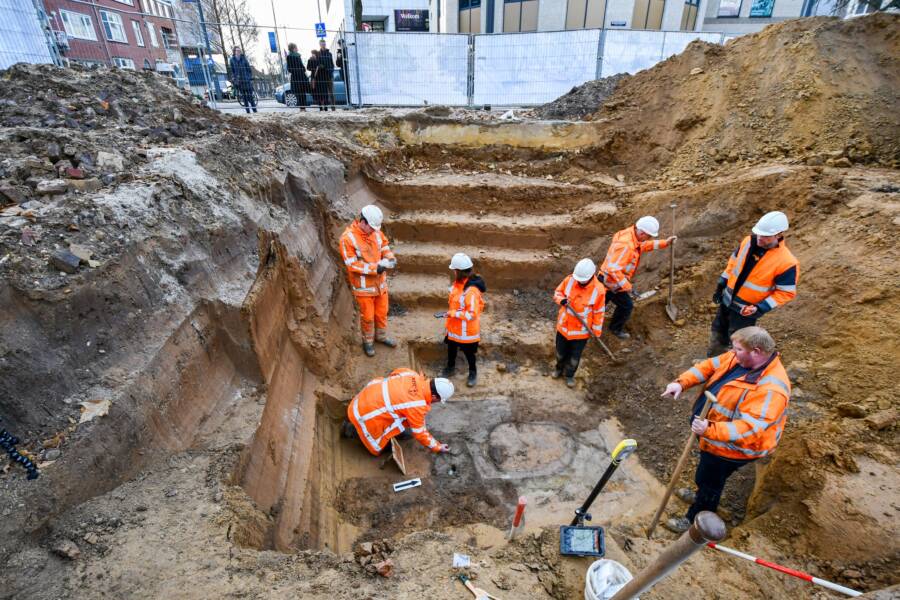
Gemeente Heerlen/FacebookArchaeologists excavating the grave of the Roman soldier Flaccus, found at Heerlen in the Netherlands.
Archaeologists recently uncovered a 2,000-year-old grave from a Roman settlement in Heerlen, Netherlands. The burial belonged to a soldier named Flaccus, and it is now considered the “most unique evidence of Roman habitation at this location.”
This indeed marks the first time that a Roman grave of a specific, named person from this era, around 0 C.E., has ever been found in the region, offering fascinating new insights into the ancient history of the Netherlands.
Archaeologists Uncover The Tomb Of A Roman Soldier Named Flaccus
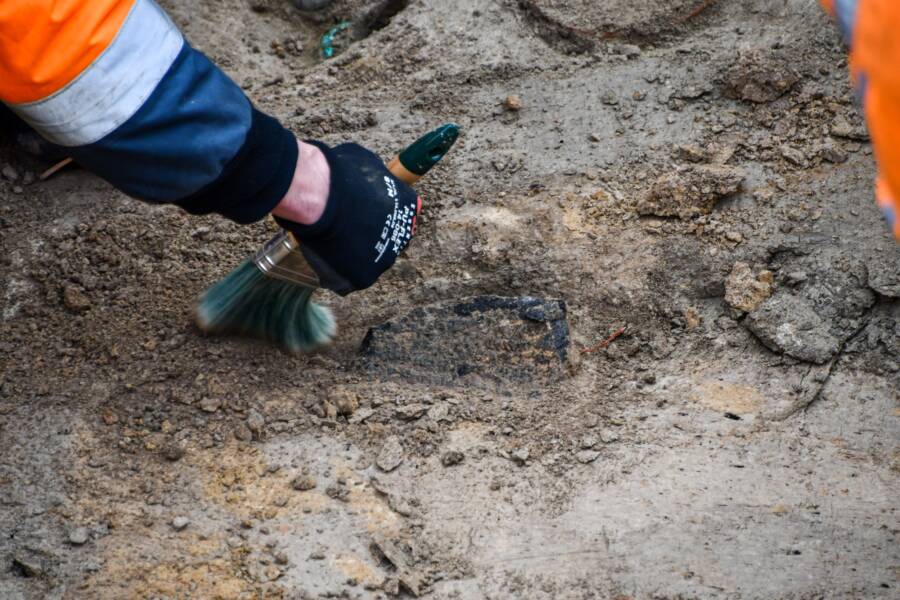
Gemeente Heerlen/FacebookVarious ceramic artifacts and grave goods were found, including one that bore the inscription “FLAC” for “Flaccus.”
The discovery was made during ongoing excavations at the Raadhuisplein (Town Hall Square) in late November 2024. The site contains remnants of the ancient Roman settlement of Coriovallum, which was situated at the intersection of two important roads.
Archaeologists from ADC Archeo Projecten were assessing the area during a redevelopment project when they came across a bit of earth with discolored soil in a rectangular shape.
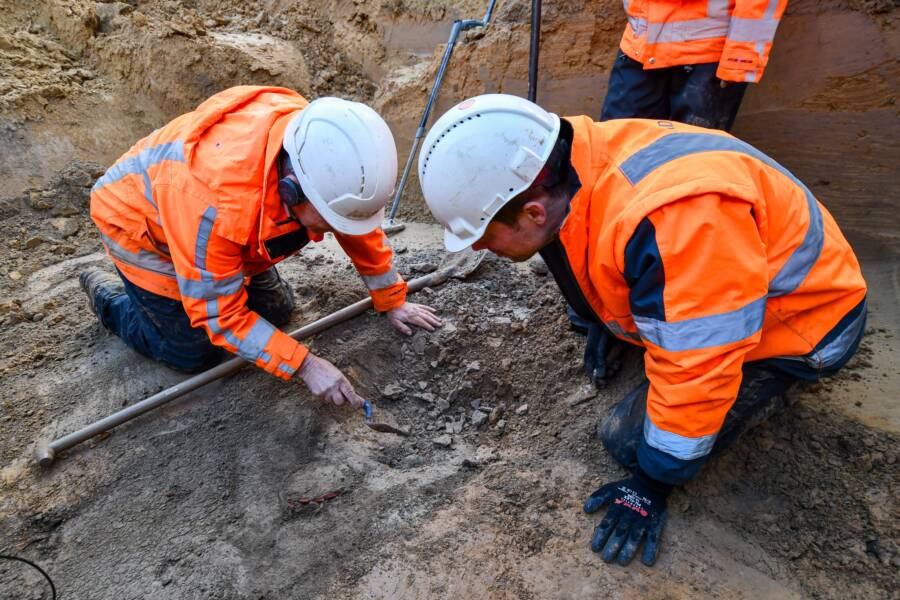
Gemeente Heerlen/FacebookThe grave showed evidence of cremation.
Believing this to be a cellar pit, the team began digging. But what they found instead was evidence of a cremation burial. Within the grave, they discovered various artifacts including a bronze strigil (a personal hygiene tool used for cleansing the skin), pottery shards, and a set of terra sigillata plates. One of these plates bore the inscription “FLAC,” a nickname for Flaccus.
In a statement, Heerlen council member Jordy Clemens said: “Today, evidence was found of Roman habitation in the time of Emperor Augustus. A unique discovery that not only teaches us more about our past, but also shows how unique the story of Roman Heerlen is for the Netherlands.”
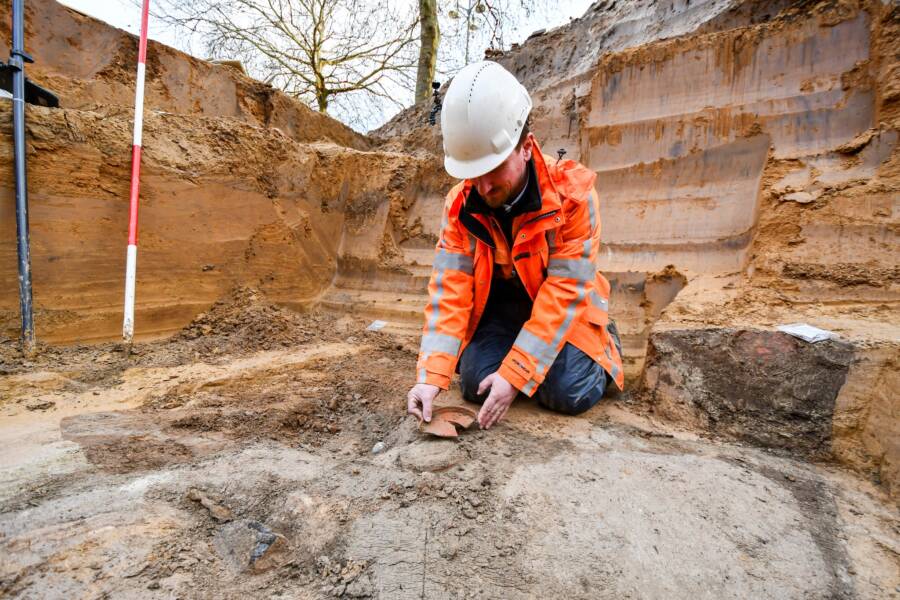
Gemeente Heerlen/FacebookUntil now, there had been no conclusive evidence of a Roman presence in the region during the first century C.E.
Most remarkably, Flaccus’ burial predates all other known Roman graves in Heerlen. So far, his is the oldest named, individual burial in the city’s history, and although there have been previous first-century C.E. finds in the region — mostly pottery — none were sufficient to confirm with 100 percent certainty that the Romans were present in the region during this time.
Now, however, Flaccus’ grave presents irrefutable proof that the Roman settlement in Heerlen existed around 0 C.E.
“In addition to the bowl, the researchers also found a bronze skin scraper and four different plates,” the statement continues. “The pottery, which comes from Italy, confirms that Flaccus was a Roman soldier. It is a unique find because it is not only the oldest Roman grave in Heerlen but also because no name was known there before.”
The History Of Raadhuisplein And Coriovallum In The Roman Era
Raadhuisplein was once at the center of Coriovallum, an integral Roman settlement during the era of their dominance in the region. It emerged at the crossroads of two significant Roman roads: the Via Belgica, connecting Cologne to Boulogne-sur-Mer, and the Via Traiana, connecting Xanten to Trèves. This strategic location led to Coriovallum’s development into a bustling hub of activity.
According to Livius, one standout feature of Coriovallum was its elaborate Roman bathhouse, or thermae, constructed around 40 C.E. This bathhouse is recognized as the oldest stone building in the Netherlands, showing just how important the settlement was during the Roman era. The well-preserved remains of these baths are now showcased at Heerlen’s Thermenmuseum.
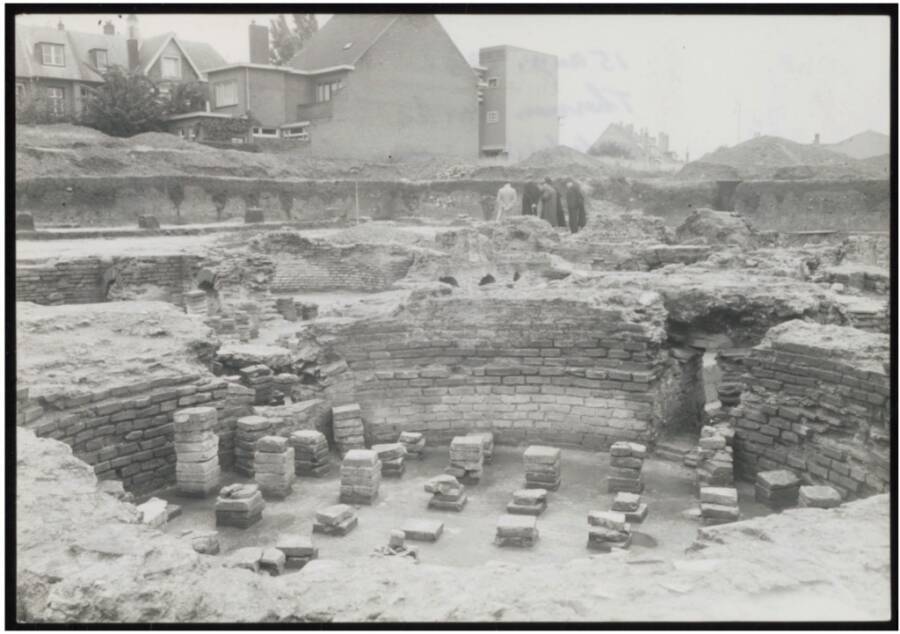
Roman ReconstructionsA photograph from the original excavation of the Heerlen bathhouse in 1941.
This bathhouse also contained a restaurant and a library, which may sound strange. However, bathhouses like this were common meeting places and often served multiple functions.
Moreover, at least 46 ancient Roman kilns have been identified within the boundaries of Heerlen, suggesting that the Roman settlement had also been an important production center for pottery.
The discovery of Flaccus’ grave is just the latest in a long line of important historical discoveries at Heerlen, and given how important this Roman settlement once was, there are bound to be more.
After reading about the discovery of Flaccus’ grave in the Netherlands, learn all about the brutal Roman military punishment known as decimation. Then, learn about the unhinged Roman emperor Commodus.





